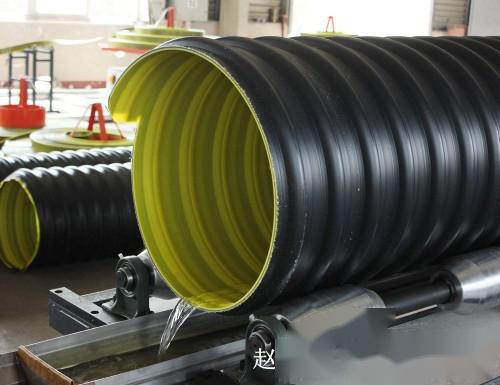Main Technical Parameters of Steel Belt Spiral Corrugated Pipe
Functional Parameters:
These are the main functional indicators of metal corrugated pipes as elastic elements and are important criteria for determining whether corrugated pipe components can be applied. In addition to providing a rated value, these parameters must also specify a tolerance range (limit values) to ensure the reliability of the elastic elements used.
Quality Parameters of Steel Belt Spiral Corrugated Pipe:
Such parameters are not involved during the use of metal corrugated pipe components; they are only directly measured during performance testing and quality evaluation of the elastic elements. The test results are used to determine the functionality, quality, failure modes, and reliability of the components.
Load of Steel Belt Spiral Corrugated Pipe:
The various expected load values applied to metal corrugated pipes and other elastic elements, such as concentrated force F, pressure p, and torque M. When using metal corrugated pipe elastic elements, in addition to specifying the applied load values, the direction and location of the load must also be specified. For pressure loads, it must be clarified whether the elastic element is subjected to internal pressure or external pressure.
Elastic Characteristics of Steel Belt Spiral Corrugated Pipe:
The relationship between displacement and applied load at a certain specified position of metal corrugated pipes and other elastic elements is referred to as elastic characteristics. Both displacement and load should remain within the elastic range of the component material. The elastic characteristics of corrugated pipe components can be represented in the form of functional equations, tables, and graphs. Their elastic characteristics depend on the structure and loading methods of various elastic elements. The elastic characteristics of components can be linear or nonlinear, with nonlinear characteristics further divided into increasing and decreasing types. Elastic characteristics are a major performance indicator of corrugated pipes and other elastic elements. For elastic elements used in instruments and measurement devices, the design generally aims to ensure a linear relationship between the output of the element and the measured parameter (load). This allows for simpler transmission amplification mechanisms to achieve equal divisions on the scale of the instruments.
Service Life of Steel Belt Spiral Corrugated Pipe:
There are two states under which elastic elements operate; one is working under certain load and displacement conditions, maintaining load and displacement constant or with little change, referred to as static operation; the other usage scenario involves continuously alternating load and displacement, where the element is in a cyclic working state. Due to the differences in working states, the modes of damage or failure of the elements also differ. The elastic sensitive elements of instruments operate within the elastic range and are generally in a static working state, leading to a long service life, usually reaching tens of thousands to hundreds of thousands of cycles. In engineering applications, corrugated pipe components sometimes work in the elastoplastic range or under alternating stress conditions, yielding life expectancies only in the hundreds to thousands of cycles. When components operate cyclically, allowable working life must be specified, along with defined cycles, time, and frequency. The rated life of elastic elements is the expected service life determined during the design of the component, requiring that no fatigue, damage, or failure occurs during this period.
Sealing Performance of Steel Belt Spiral Corrugated Pipe Elastic Elements:
Sealing performance refers to the ability of components to prevent leakage under certain internal and external pressure differentials. During operation, corrugated pipe components are filled with gases or liquid media and maintain a certain pressure, thus sealing performance must be ensured. The detection methods for sealing performance include air pressure sealing tests, leakage tests, liquid pressure tests, and helium mass spectrometry leakage detection.
Operating Temperature Range of Steel Belt Spiral Corrugated Pipe:
The operating temperature range of metal corrugated pipe components is quite broad and is generally specified before the design and manufacturing of the elastic elements. Some specially designed corrugated pipes have internal cavities that operate with liquid oxygen (at -196℃) or even lower temperatures using liquid nitrogen, with pressure resistance up to 25MPa. Large corrugated expansion joints used for pipeline systems (with nominal diameters sometimes exceeding lm) are required to withstand 4MPa pressure, 400℃ temperature, and have certain corrosion resistance stability. The temperature adaptability of elastic elements depends on the thermal resistance properties of the elastic materials used. Therefore, it is essential to select elastic materials with suitable thermal performance parameters based on the operating temperature range of the elastic elements to manufacture qualified corrugated pipe components.
Contact Person:Manager Zhao
Mobile:18623755437
Phone: 0379-60692512
Fax: 0379-65260950
Company Website: www.lygrsjw.com
Email: 874689613@qq.com
Factory Address: Ma Tun Town, Mengjin County, Luoyang City, Henan Province
Welcome to purchase our polyethylene pipes, and we will provide you with excellent product services!













